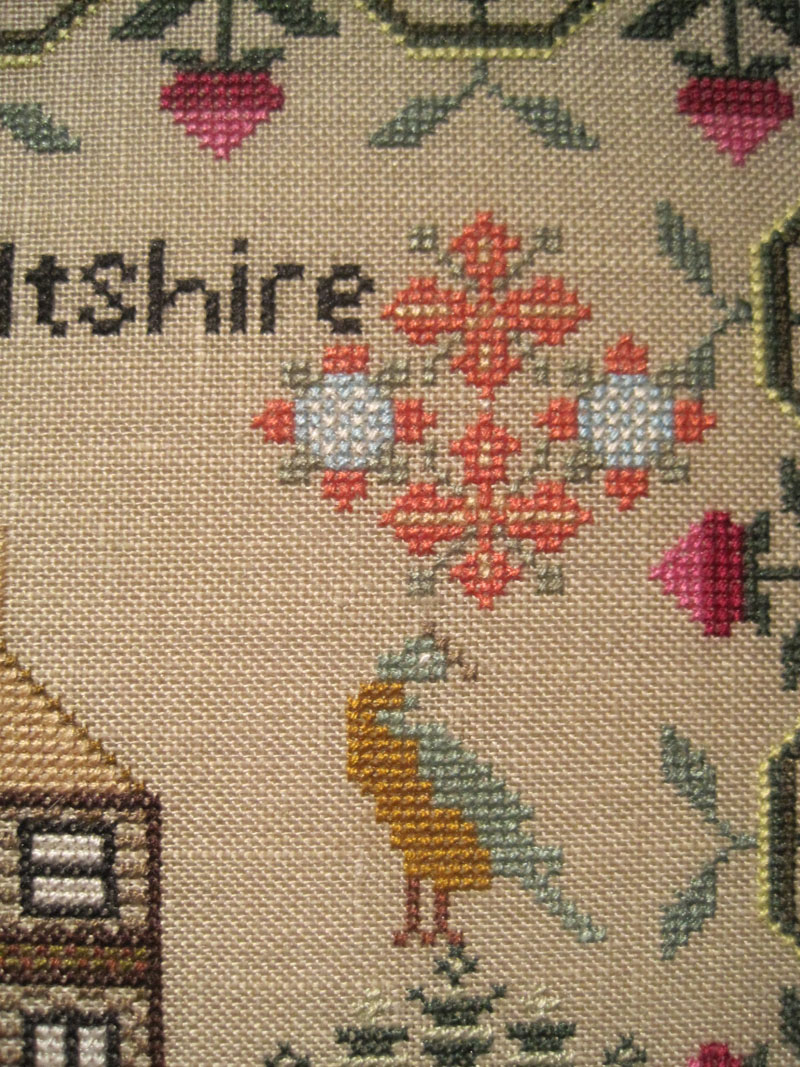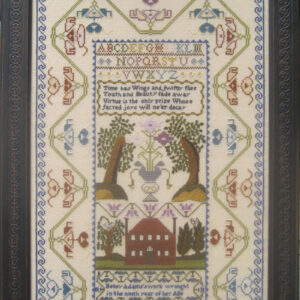Description
Famous buildings often appear on early needlework samplers, from Solomon’s Temple, to Boscobel House, to the many castles and mansions in Scotland as well as orphanages and infirmaries, particularly in the late nineteenth century. Many of these stitched images were based upon architectural drawings rather than actual sketches or paintings, but that has been forgiven and forgotten over the course of time. Maria Tomlinson, who most likely was born, raised, married and buried in Nottinghamshire, stitched the east front of Wilton House in Wiltshire as it might have appeared in 1841. The house has a long and rich history. An early photograph of the east side, taken in 1907 by Queen Alexandra, looks remarkably like Maria’s interpretation. The central tower is all that remains of the Tudor house, built in 1551 but razed eight years later by a subsequent Earl of Pembroke, with very different architectural visions. The venue has been used in scenes from many notable films including, most recently, “The Crown”, where the double cube room was used to represent one of the formal rooms at Buckingham Palace. Rooms in Wilton House were also used for scenes in the 2005 adaptation of “Pride and Prejudice”, as well as “The Young Victoria” (2009).
Stitches used in the sampler include cross, petit point, counted satin, and back. The original sampler measures 19″ x 22″. On 35 count linen the reproduction will measure approximately 16″x20″. The sampler is recommended for intermediate level needle workers, mainly because of the counted satin stitches used in the windows and chimneys.
Additional information
| Format Options |
|---|











